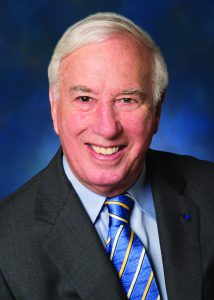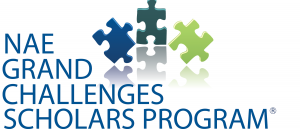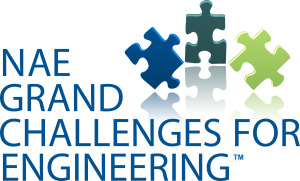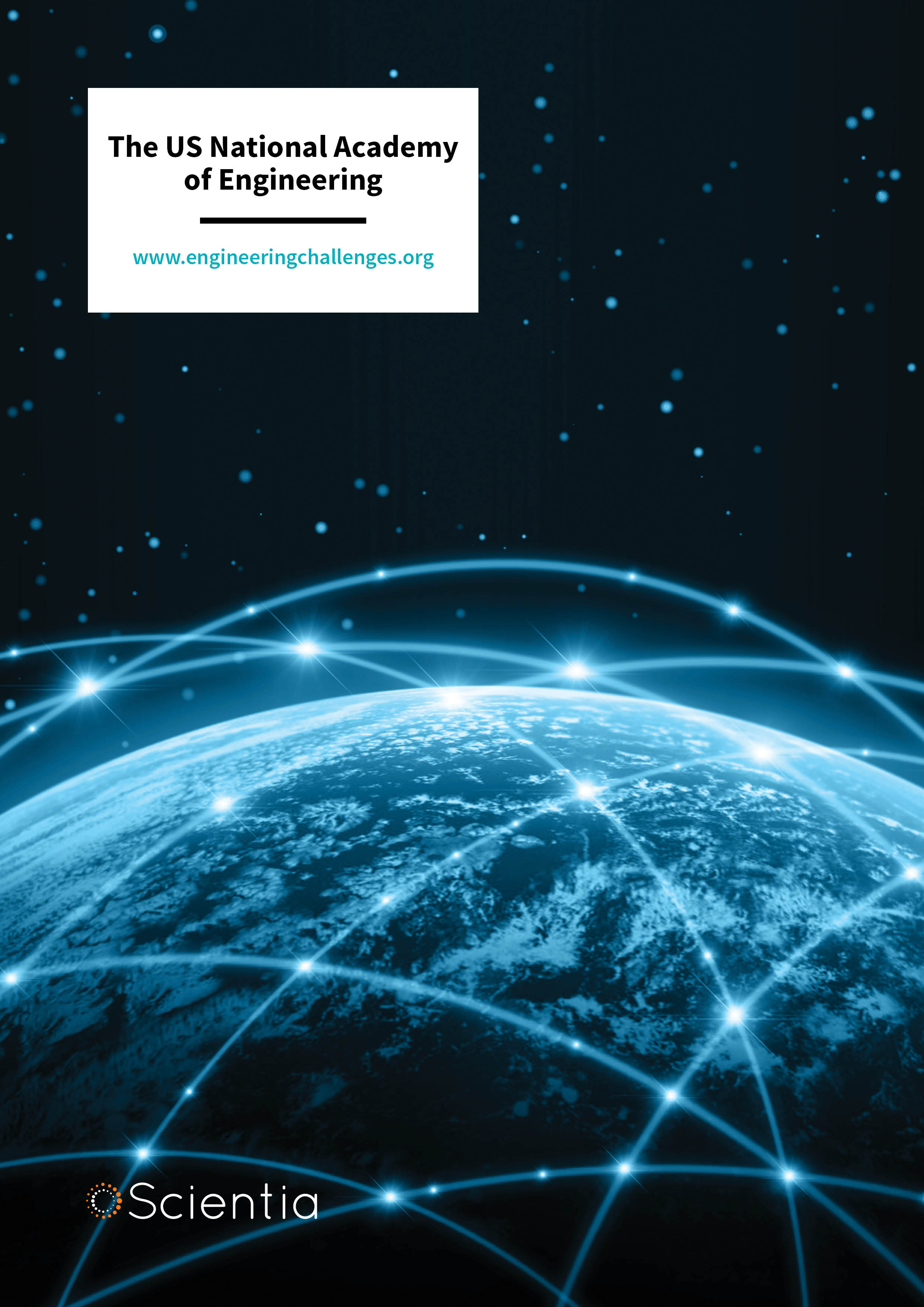The US National Academy of Engineering
Founded in 1964, the US National Academy of Engineering (NAE) is a private, independent, non-profit institution that provides engineering leadership in service to the nation. It has a long and illustrious history serving the American people in its role to advise and support scientific and engineering advancement both in the US and world-wide.
In this exclusive interview, we talk to the NAE’s president Dr. C.D. Mote, Jr. about the NAE and its ‘Grand Challenges for Engineering.’ This program is aimed at inspiring young engineers across the globe to address the biggest challenges facing humanity in the 21st Century. From the need to develop affordable clean energy solutions and increase access to renewable environmental resources, to facing new challenges in health care, these challenges potentially impact on the quality of all our lives. These global grand challenges are huge in scope and address the biggest current concerns of all the world’s citizens.
To begin, can you please tell us briefly about the National Academy of Engineering and its role in promoting engineering and providing leadership for the engineering community in the US?
The mission of the National Academy of Engineering is to provide independent, trusted advice to any department of the federal government to advance the well-being of the nation and to promote a vibrant engineering profession. This is accomplished by marshalling the expertise and counsel of eminent engineers.
The NAE has more than 2,000 peer-elected members and foreign members, senior professionals in business, academia, and government who are among the world’s most accomplished engineers. They provide the leadership and expertise for wide-ranging projects serving the needs of people and society.
The NAE is one of The National Academies of Sciences, Engineering, and Medicine. The three academies operate in the same building under the same congressional act of incorporation that established the National Academy of Sciences in 1863 by President Lincoln. Under this charter the NAE is directed, ‘whenever called upon by any department or agency of the government, to investigate, examine, experiment, and report upon any subject of science or art,’ where ‘art’ includes all human creations.
‘The Grand Challenges for Engineering project was conceived to raise public awareness – especially among young people – of some of the biggest global issues of our time and the roles that engineers, and engineering must play in addressing them.’
Can you tell us a bit about the origins and purpose of the NAE’s grand challenges for the future of engineering?
 The Grand Challenges for Engineering project was conceived to raise public awareness – especially among young people – of some of the biggest global issues of our time and the roles that engineers, and engineering must play in addressing them.
The Grand Challenges for Engineering project was conceived to raise public awareness – especially among young people – of some of the biggest global issues of our time and the roles that engineers, and engineering must play in addressing them.
The project, funded by the US National Science Foundation, convened an international committee of some of this generation’s leading technological thinkers and doers. With wide-ranging voluntary inputs on what engineering should contribute in the 21st century from people in more than 40 countries, ranging from engineering experts to the general public, the committee identified a 21st century engineering vision for the planet focusing on the needs of people. The committee’s report, released in 2008, identified its 15-word vision for engineering in the 21st century as the ‘continuation of life on the planet, making our world more sustainable, secure, healthy, and joyful.’
The report also presented 14 goals that must be satisfied globally to realise this vision. Those 14 goals are named the Grand Challenges for Engineering. Satisfying these grand challenges everywhere is necessary to realise the vision and improve quality of life here on Earth.
The Grand Challenges for Engineering are global-scale engineering system challenges whose solutions will depend on contributions from around the world. The grand challenges are arguably the clearest and most compelling explanation of what engineering is for students and the public alike because they illustrate both the vast span of the field of engineering and how engineering serves people and society, both not generally understood. This is the first global vision for engineering in history.

Can you give a brief summary of some of these challenges and how addressing them will impact on quality of life across the globe?
The Grand Challenges for Engineering are as follows. To make solar energy economical, to develop carbon sequestration methods, to manage the nitrogen cycle and to provide access to clean water. They also include developing enhanced virtual reality, advanced health informatics, restoring and improving urban infrastructure and engineering better medicines. As well as preventing nuclear terror, securing cyberspace, reverse-engineering the brain, advancing personalised learning, engineering the tools of scientific discovery and providing energy from fusion.
Our planet’s very survival, as we know it, depends on satisfying many of these challenges. In addition, the vision, underpinned by the Grand Challenges is the first engineering vision that mandates global perspective. The vision cannot be realised by a few nations, though a few nations can inspire attention to it. Each grand challenge needs to be achieved in all global locales and circumstances.
For instance, the challenge to ‘provide access to clean water’ is for everyone, those alive today, including those with contaminated water and those with no water at all and those yet to be born in this century. Each challenge is to be fulfilled globally by assembling solutions as needed locally. Because the vision is about life for all, this is a rare circumstance where people everywhere, across diverse cultures and countries, share in the importance of the Grand Challenges. There are no losers in this vision.
Since their publication in 2008, the Grand Challenges have spawned a biannual series of Global Grand Challenges Summits and a Grand Challenges Scholars Program that prepare students and the public to address these challenges and engineering system problems like them.

How are you supporting the education and training of the next generation of engineers? For example, can you tell us about the NAE Grand Challenges Scholars Program?
Because the vision for the Grand Challenges for Engineering and their solutions are global, fulfilling that vision requires engaging people all over the world. Given the interest young engineers everywhere have expressed in these challenges, including their participation in our three global summits (detailed later) and engaging them in the Grand Challenges Scholars Program (GCSP) has inspired young people to work on the challenges globally.
This is a principal goal of the GCSP and is the key to achieving the vision of the Grand Challenges for Engineering. A second, broader goal is to prepare students for the multicultural, multidisciplinary, socially conscious global engagement needed for 21st century engineering in general. The Grand Challenges Scholars Program is an engineering program supplement that is implementable in any existing university engineering program without disrupting its program.
The Grand Challenges Scholars Program was introduced in 2009, just one year after the Grand Challenges for Engineering report was published. Its singular role is to enhance students’ competencies in five areas that are not commonly found in engineering curricula.
- Research/creativity – Mentored research or creative experience on a Grand Challenge-like topic; talent competency
- Multicultural understanding – Understanding of cultures, preferably through a multicultural experience, to ensure cultural acceptance of proposed solutions where they are implemented; cultural competency
- Multidisciplinarity – Understanding of multidisciplinary engineering system solutions, developed through engagement; multidisciplinarity competency
- Viable business/entrepreneurship – Understanding, preferably developed through experience, of the necessity of a viable business model for where a solution is implemented; business competency
- Social consciousness – Understanding that solutions should serve primarily people and society, reflecting social consciousness; service learning promotes social consciousness; social consciousness competency
In creating a Grand Challenges Scholars Program, two questions were of primary importance. For the students, what supplement to a traditional engineering program would stimulate their interest in and preparation for the vision and goals of the Grand Challenges for Engineering and problems like them?
For the universities, what supplement could be easily implemented everywhere on the planet to prepare students for global engineering initiatives that concentrate on the highly valued program outcomes (the five student competencies) while leaving all program operations to each university?
‘Grand Challenges for Engineering are not US grand challenges but are global grand challenges whose solution serves all people so international engagement is necessary. This is a first in history.’
Each university selects its students, educates its students on the five competencies, evaluates student achievement on them, determines those students who merit recognition as Grand Challenges Scholars, and recognises them appropriately. Each university operates its own GCSP independently of all others, other than accepting the responsibility to educate its students on the five student competencies. The GCSP addresses the needs of both students and universities beautifully.
In 2017 more than 100 US engineering colleges have a Grand Challenges Scholars Program in operation or under development. The US’s goal is to expand to 200 Grand Challenges Scholars Programs, which will include about half of the engineering colleges in the country. Seven international engineering colleges have operating Grand Challenges Scholar Programs while more than twenty additional colleges are developing programs.
The international goal is to expand to 200 Grand Challenges Scholars Programs abroad. Interest in the program among students is high, so continued growth, often driven by the students themselves, is realistic. Furthermore, the GCSP is attracting students from diverse backgrounds, especially women and underrepresented minorities, who constitute more than half of the students in the program, although they account for about a quarter of the US engineering student population. Participation in the program by students from fields outside engineering is also common and determined by each university.
Finally, I would note that the Grand Challenges for Engineering are also being incorporated in community colleges and in K-12 school programs across the US, both within their curricula and in after school activities.

How are you encouraging international collaboration to address these global challenges? Can you tell us a bit about the Vest Scholars Program and the Global Grand Challenges Summits?
Let me start with the Global Summit series. The Global Grand Challenges Summits have been hosted jointly by the NAE, the UK Royal Academy of Engineering, and the Chinese Academy of Engineering beginning in London in 2013, the next in China in 2015, and the most recent was in Washington, DC in 2017. The summit series facilitates collaborations to address the Grand Challenges, maintains the focus on the Grand Challenges vision, and, importantly, is an opportunity to inspire students and next-generation engineers to engage with the Grand Challenges for Engineering.
The latest event in DC was the largest program in NAE history, with some 900 attendees, more than half of whom were university students from 150 universities across the three countries. It required multiple venues at the National Academy of Sciences building, George Washington University and the US Institute of Peace. The thematic foci were sustainability, health, security, and joy of living, as well as education and public engagement. Topics included virtual reality and artificial intelligence, engineering and health care, climate change, and reverse engineering of the brain.
The program was divided between expert presentations on the progress made toward addressing the Grand Challenges and the dynamic ways to engage student interest and participation. For the students, there were poster and business plan competitions, a podcast competition on, ‘How to Change the World’, and extended Q&A opportunities with the speakers and sponsors. Student presentations on their experiences in the Grand Challenges Scholars Program highlighted the transformational impacts of this program on their education and, the highest accolade of all, on their choice of an engineering career.
In addition, in a collaborative arrangement with NAE member Dean Kamen, the inaugural FIRST Global Challenge robotics competition – FIRST stands for, ‘For Inspiration and Recognition of Science and Technology’ – drew high school student robotics teams representing 157 countries in an Olympic Games style team competition held in conjunction with the global summit. The contest asked participants to take on one of the Grand Challenges – providing access to clean water.
The Charles M. Vest NAE Grand Challenges for Engineering International Scholarship Program – The Vest Scholarships – was launched in March 2013 at the inaugural Global Grand Challenges Summit. This program provides opportunities for graduate students at selected international universities to pursue research addressing a global Grand Challenge at a leading United States university, with expenses paid for a year of travel and study.

Finally, what do you see as key to the future success of tackling these Grand Challenges in the next ten years?
A necessary condition for achieving the vision of the Grand Challenges for Engineering is the successful global implementation of the Grand Challenges Scholars Program.
This conclusion is driven by the following observations. Students in the Grand Challenges Scholars Program are highly committed to and excited about the Grand Challenges for Engineering. These students also have the capability to introduce the Grand Challenges for Engineering movement into their countries and local communities which otherwise would likely have no contact with it. They also have the potential for leadership to ‘carry the banner forward’ subsequently as they become professionals and volunteers.
The solutions to the Grand Challenges for Engineering are mandated to serve all global communities. After a decade following 2008, no viable alternative to inspiring international students for fulfilling that mandate is apparent.
Additionally, we need to further engage younger students – and their parents – by introducing them to the Grand Challenges for Engineering in and out of school and to raise awareness of them among media, policy makers and the general public.
From the beginning, we recognised that the Grand Challenges for Engineering are not US grand challenges but are global grand challenges whose solution serves all people so international engagement is necessary. This is a first in history.


http://engineeringchallenges.org

